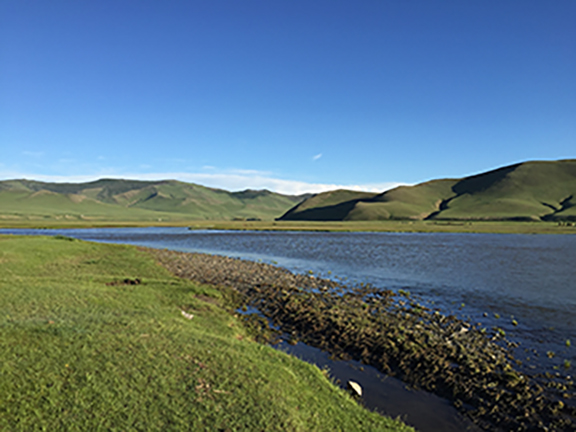Central
Asian Geography:
The Steppe Zone and Its People
Inner and Outer Eurasia
Other terms used to describe *Inner Eurasia
*Central Eurasia
*Central Asia
*Inner Asia
*The Silk Road
Eurasian Ecological Zones
E-W Belts
Tundra
Forest
*Steppe
Desert
Forest
Rain forest
Eurasian Monsoon Climate
Eurasian Steppe
10-20 in. rain annually
Desert, under 10 in. rain annually
Eastern Central Eurasian Steppe
*Inner Mongolia
*Gobi Desert
*Mongolia
19th largest area
1,564,116 sq km
139th largest pop
3 million

Orkhon River Valley in Central Mongolia
Western Central Eurasia
*Kazakhstan
*Kyrgyzstan
*Tajikistan
*Uzbekistan
*Turkmenistan
Pastoral Nomadic Herding Economy
Positive
Survival in steppe
Sheep, horses, goats, cattle
Milk and meat
Wool, skins, transport
Dairy Products
Kumiss or Airag
Fermented mare’s milk
Sun-dried sheep or goats’ milk
Kaymak
“Clotted Cream” made from sheep or cow milk
*Yurt or Ger
“The dwelling in which [the Mongols] sleep has as its base a circle of
interlaced sticks…they cover it with white felt.” (William of Rubruck)
Regular migration patterns
Mountain Nomads
Summer in highlands
Winter in sheltered lowlands
Plains nomads
North in summer
South in winter
Negative
Disease
Predators
Weather
Pastoral Nomadic Tools of Empire
Cavalry technology complex
Horse domestication and bit, 3500 BCE
Jacket, pants, belt and boots!, 10th c. BCE
Composite bow, 9th c. BCE
Saddle, 6th c. BCE?
Reigns, bridle, 6th c. BCE?
Languages of Steppe
Altaic
Turkic
Mongolian
Indo-European
Iranian
Discussion: Golden 1-20, Whitfield 1-8
How do Golden and Whitfield differ in their definitions of the Silk Road?
According to Golden, why are the steppe and oasis zones interdependent? Why
did the medieval Turks have the saying “A Turk is never without a Persian
[Tat], just as” a head is never without a hat? (p. 18)
What is the value of material cultural as historical source?
